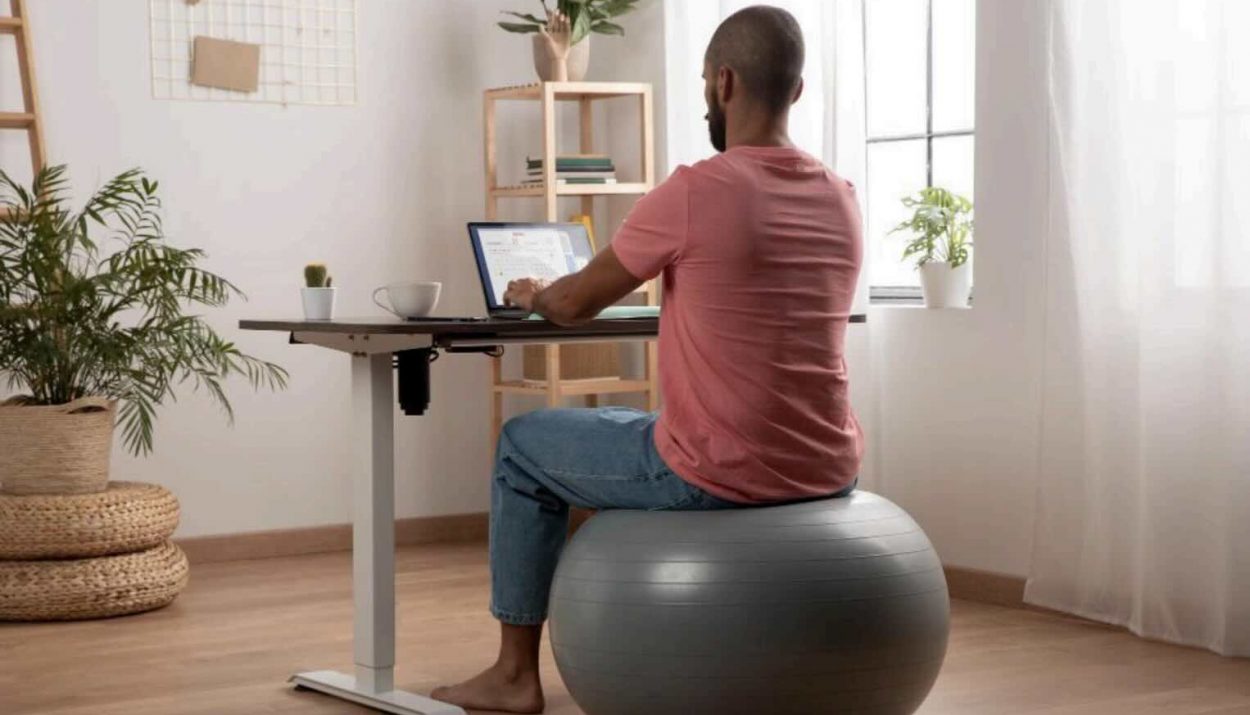Posture often goes unnoticed—until discomfort begins to surface. It’s easy to dismiss
slouching as an inevitable result of long workdays or constant screen use, but the way you
carry your body has long-term consequences. Poor alignment can lead to chronic tension,
reduced mobility, and an overall sense of fatigue that compounds over time. The good news
is that improving posture doesn’t require dramatic changes or rigid routines; it begins with
small, sustainable habits woven into your daily life.
Start with Awareness
Before you buy a posture corrector or start Googling “how to realign my spine,” do this:
Notice how you’re sitting right now. Chances are, you’ll find your head jutting forward,
shoulders curled in, and lower back collapsed. The first step to better posture isn’t forcing
your body into some militaristic pose—it’s becoming aware of how you carry yourself when
you’re not thinking about it. This kind of awareness is subtle but powerful; once you catch
yourself slumping for the tenth time in a day, you begin to build the muscle of correction
without self-flagellation. And over time, that shift adds up.
Stretch What’s Tight, Strengthen What’s Lazy
Poor posture isn’t just a result of bad habits—it’s a reflection of imbalanced muscles. Your
chest, hip flexors, and neck might be too tight, while your glutes, upper back, and core are
phoning it in. Start incorporating stretches that open up the front of your body—think
doorway chest stretches, hip flexor lunges, and neck release moves. Then balance that with
strength work like rows, glute bridges, and bird-dogs to remind the backside of your body
that it still matters. You don’t need a gym or a trainer, just five to ten minutes a day and the
willingness to feel a little awkward.
Stack Your Workspace, Not Just Your Spine
If your workday involves a desk, your environment might be sabotaging you more than your
willpower. Your monitor should be at eye level, your keyboard close enough that you’re not
reaching forward, and your feet flat on the ground or a footrest. Think of it as ergonomics
for people who don’t want to buy weird gadgets. Even small changes—a stack of books
under your laptop or a rolled towel behind your lower back—can nudge you into a better
position. You’re not aiming for perfection, just alignment that doesn’t make your body
resent you by 3 p.m.
Take a “Posture Reset” Break
Instead of trying to sit up straight all day (which no one does), schedule micro-breaks to
reset. Every 45 minutes or so, stand up, stretch your arms overhead, roll your shoulders,
and walk around—even if it’s just to the kitchen. These posture resets do more than realign
your body—they break the hypnotic spell of the screen and remind you that you’re a person
with a spine, not a productivity robot. Over time, these little resets reinforce healthier
habits without you having to micromanage every sitting moment. It’s posture with a pulse,
not posture with a punishment.
Train Your Posture with Everyday Movements
You don’t need a gym membership to practice posture. The way you carry your groceries,
walk your dog, or stand in line at the coffee shop can become mini posture clinics. Try
engaging your core, keeping your head over your shoulders, and squeezing your glutes
lightly when you’re standing. Think of it as sneaky strength training embedded in daily life.
It’s not about being stiff or hyper-vigilant—it’s about choosing small moments to realign
and reawaken muscles that have gone dormant from modern life’s convenient traps.
Create a Custom Posture Plan
When you’re working to improve your posture, there’s real value in tailoring the process to
your body’s needs rather than relying on a generic approach. Creating custom guides or
exercise routines allows you to focus on the areas that actually need attention. If you’ve
compiled a comprehensive PDF with a variety of posture exercises, you may find as you
progress that not all sections are relevant to your current goals or fitness level. Learning
how to delete specific PDF pages gives you an easy way to remove unnecessary content, so
your guide stays streamlined, practical, and perfectly suited to your progress.
Make Your Phone Less of a Neck Trap
Let’s talk about phones—specifically, the way we crane our necks to view them. Tech neck
is real, and it’s not cute. Try holding your phone at eye level when possible, especially
during longer browsing sessions or video calls. And if you’re reading or texting for more
than five minutes, treat it like screen time with consequences: shift positions, stretch your
neck, or just look up. Your cervical spine will thank you, and you’ll look less like you’re
studying your shoes in public.
Sleep Smarter, Not Harder
You spend about a third of your life in bed, so if your mattress and pillow are working
against you, you’re undoing all your daytime posture wins. Aim for a firm-but-supportive
mattress and a pillow that keeps your neck in line with the rest of your spine—especially if
you’re a side sleeper. If you sleep on your stomach (which can twist the spine), consider
transitioning to your back or side over time with the help of pillow placement. Think of
sleep posture as the passive income of alignment—it works while you don’t.
The biggest mistake people make is treating posture like a moral failing. You’re not a bad
person for slouching. You’re a human adapting to unnatural environments. That’s why the
most effective strategy isn’t about rigid rules—it’s about consistent cues, smart setup, and
choosing awareness over anxiety. When you stop chasing perfect posture and start
embedding small alignment rituals into your day, you’re not just standing taller—you’re
living lighter.
Explore a realm of insights and inspiration at My Unbounded Life, where lifestyle, health, and fashion come together to enhance your everyday experience!






